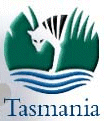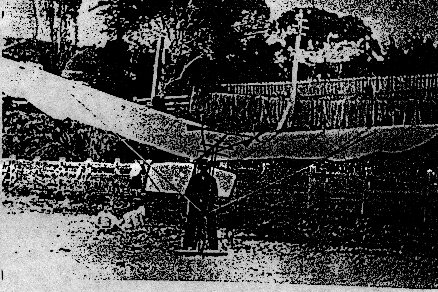 |
|
 |
|
Best viewed in 800 x 600 screen resolution |
On this page I am attempting to gather
as much information as I can on HPA history in Australia.
If you know of anything I could add please contact me. 1900 G.S Richardson designed and built this pedal-operated glider during 1908 in Penguin, Tasmania. He had moved to Penguin in 1900, where he built and operated a small cordial drink factory. He later established a bicycle manufacturing and repair workshop, and then expanded to encompass motorcycles and motorcars. Flight was attempted during 1908, from a hill at the eastern end of Penguin, but finished with a crash onto Watcombe Beach. The pilot, who sustained a broken collar bone, was a local, one Dr DeWitt Henty. The pilot sat on a bicycle, which was suspended beneath the wings by several struts. The main struts were connected to the centreline of the wing structure, while other struts were attached to both leading and trailing edges. Flying wires were also attached to each wing tip. Presumably the pilot was to provide the energy to turn the propellers as well as steer and ride the bicycle during the ground run. The wings were set with substantial dihedral, but the ribs were flat, with no camber built in. Wingspan 30 'Ft (9.14 m) approximately
The (sorry but very poor) photograph shows Richardson in his pedal-operated glider. Drawing 1963 In 1963, Knipe constructed a manpowered aircraft of his own design. It was intended to compete for the Henry Kremer/Daily Mail (United Kingdom) prize for the first figure of eight flight by a man-powered aircraft. This craft was a flying wing of delta planform. It was powered by two exhaust turbines, which were operated by a set of bicycle pedals. Unfortunately Knipe's aircraft was not successful. 1979 Lauchlan Thornpson was involved with building a copy of Paul McCready's Gossomer Dragonfly with students at RMIT in 1979, and achieved some flights, but to my knowledge no official record attempt was made. Late 1980's I was periperally involved in an unsuccessful HPA
flight at Wentworth park in the late '80's. 1990 1992 1993 Date Unknown * I believe that LSF member, John Lynch of Tocumwal, NSW was also involved with an HPA canard project some years ago when he was in the services, but he me that it did not achieve much success, due to pitching problems. The canard aircraft above may well be the Reg
Todhunter "Skycycle" - yes, another one - that
was built and tested in the early 80s. The Skycycle was
donated to the Powerhouse Museum, which had it in
storage. Some details about the Skycycle were published
at the time in the "Jane's All the World's
Aircraft" annuals. * Wally Smith from Australia demonstrating his craft which closely resembles an Autogyro as shown on the Birdman Gallery page. |

